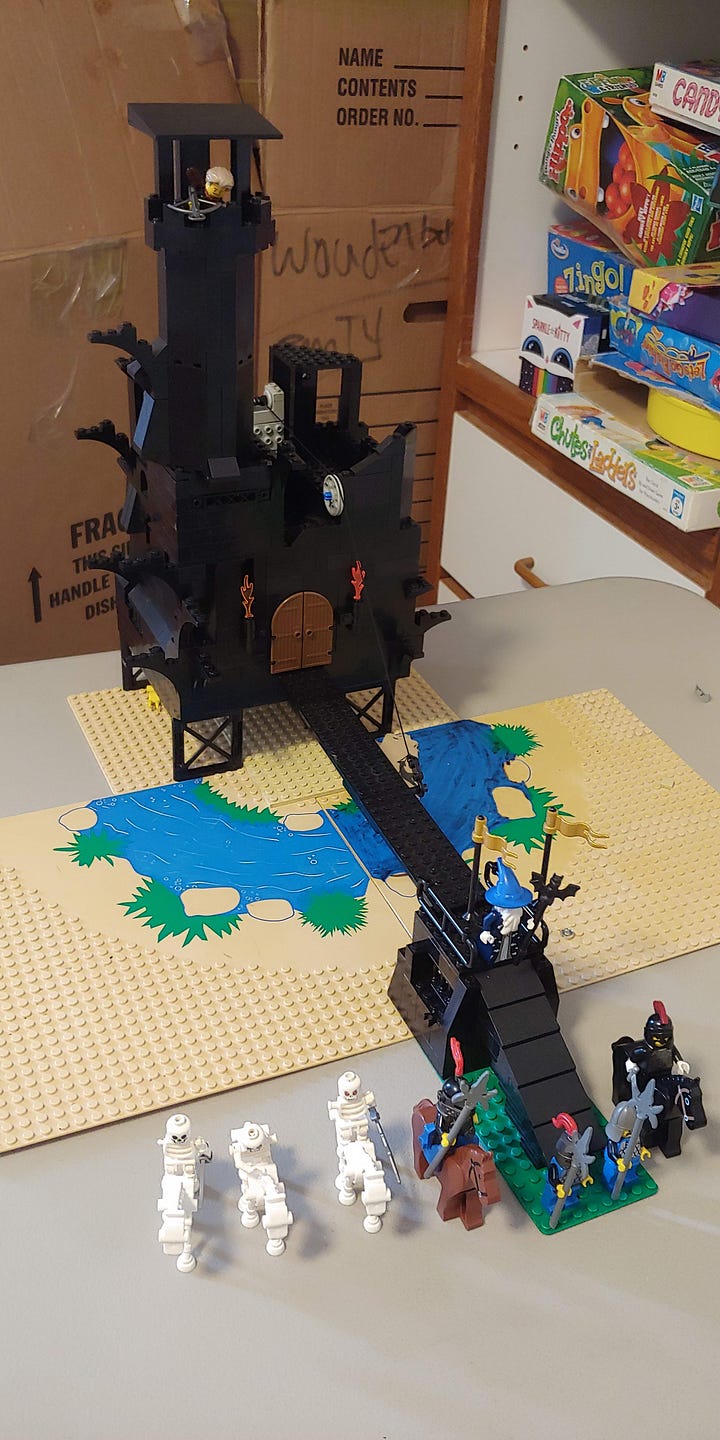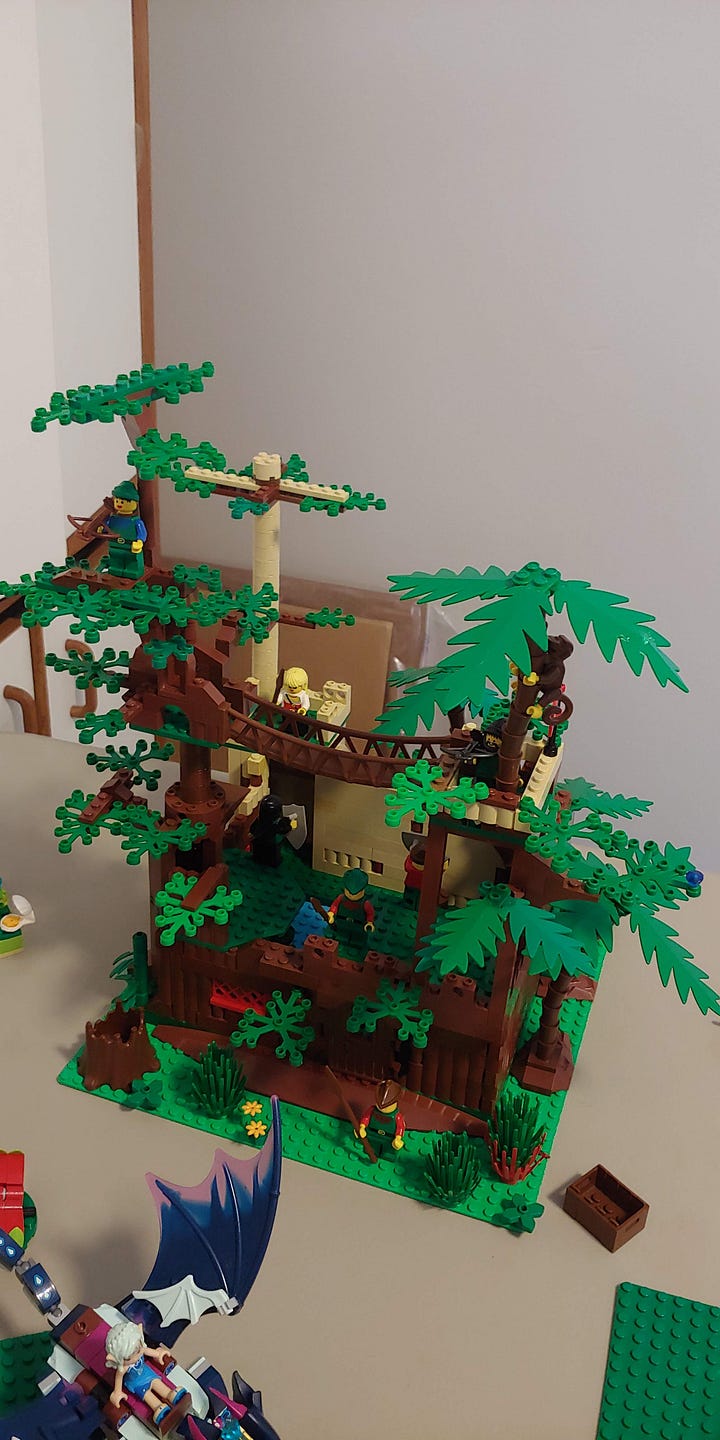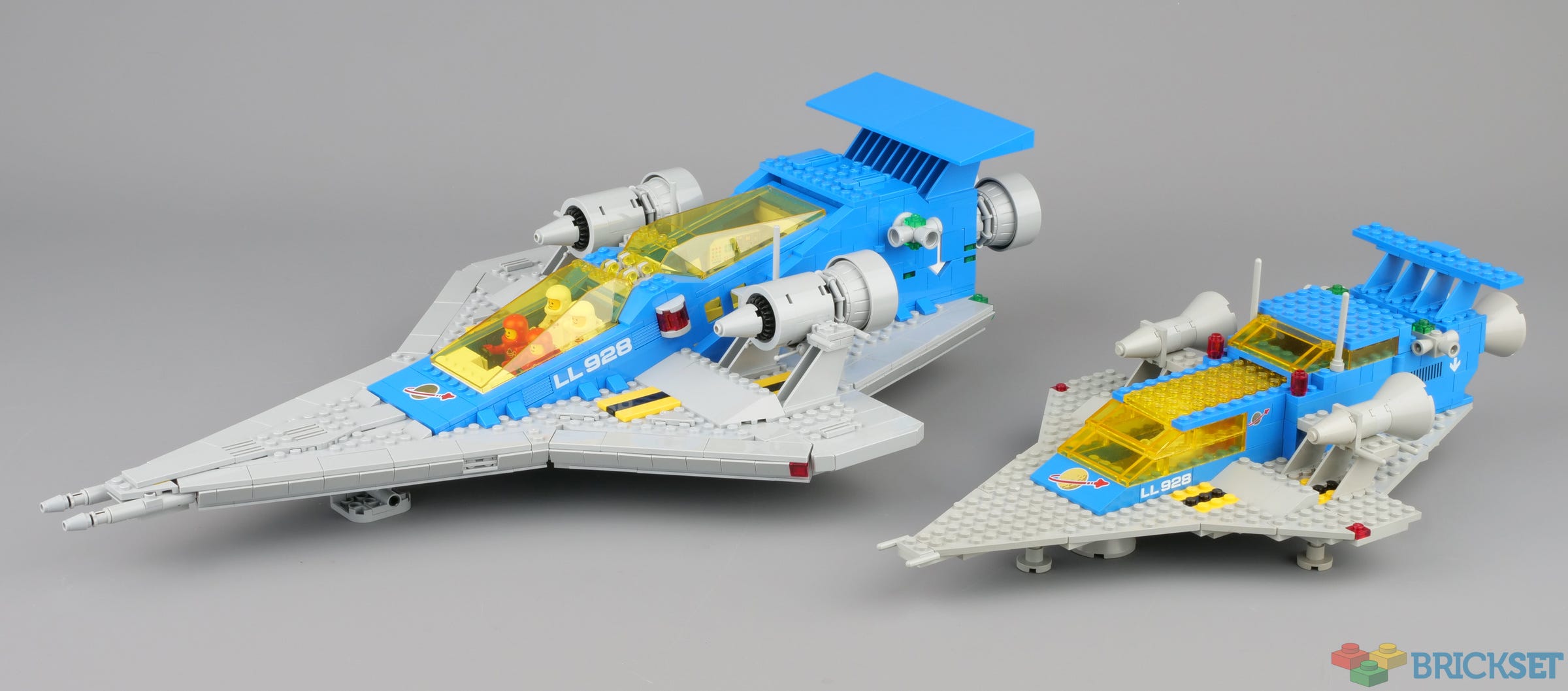Composable Architectures and Lego
Creating and Losing Modularity
Welcome to Polymathic Being, a place to explore counterintuitive insights across multiple domains. These essays take common topics and investigate them from different perspectives and disciplines to come up with unique insights and solutions.
Today's topic introduces the concept of composability in design and connects the popular Lego model to both what is so good about composability and modularity as well as how we can lose focus over time. Simply put, composability is a method by which modular parts can be combined and recombined from one design to another. It’s a powerful capability in both physical design and Polymathic thinking as we do the same thing with information in forming, unforming, and reforming ideas.
Introduction
For those not familiar with Lego, they are the highly popular plastic toy that leverages precise standards and modularity. Incredibly, Lego bricks from 1958 still interlock with those made today, and the key differentiator between Lego and other brands is the precision of manufacturing, quality of plastic, and robustness of coloring.
This essay’s focus is on composability and Lego demonstrates that ability in the use their bricks in virtually any configuration. It’s also a simple way to understand modularity and reusability, all of which lead to fantastic opportunities to leverage existing efforts in new and unique ways. For example, the images below are all castles I built with the kids based on the aggregation of a lot of pieces from hundreds of different kits.




This form of composability is a key driver in almost all of the technology that you use on a regular basis. From the way WordPress and Divi assist in building my website with reusable modules, to the way Kubernetes and containers in software allow systems like Substack to deploy reliable, resilient cloud solutions so these essays can be published and listened to.
Composability is gaining traction in every domain and discipline from DARPA’s military concept of Kill Webs to the cellphone technologies we use every day. Yet despite the ubiquity and value of composability, it is often deprioritized for convenience in the short term, or the demands of customers for something unique, or for the simple fact that it’s harder to hold the discipline of modularity and composability not to mention the foresight to plan for it upfront.
Losing Composability
Even Lego has suffered a loss of overall composability with its new products. I used to buy sets for their component parts because I intended to reuse the useful parts in kits I’d build from my imagination. However, recent kits have so many specific and bespoke parts as to render the majority of them unfit for reuse in a significant way.
A great example is Lego’s re-release of the iconic Galaxy Explorer spaceship. The new release is sleeker, has some really fun features, and in general, is more aesthetically pleasing. But with the consequence that it’s not really intended to be deconstructed and recomposed like the original. A simple inspection will show the original has much more ability to be built into many more, and many different styles of Lego like Castle, City, and more.

Another example is a new Harry Potter set my daughter just got, Weasleys' Wizard Wheezes. It’s a fun kit for certain and very accurate to the movie. But with the colors and the specificity of the component parts, this is not intended to be composable. It’s intended to be composed and then maintained in that state as a playset.

Cue the Lego Movie and Kragle (Krazy Glue) to keep things in their place forever.
I don’t mean to make this a ding on Lego per se, but it provides an interesting example of composability, or the potential for composability, and what happens when we lose it. These kits are still fun, my kids still like playing with them, but it’s a different form of play. I also see the impact of the change in how they free-form ideas in creating their own builds. They are more inclined to want to build existing sets from old instructions, more so than I think I did at that age.
It’s a gut feeling about the loss of some creativity when the kit arrives with a presupposed expectation of remaining together. I think this is the point that bothers me the most, especially when the core of Polymathic Being is the ability to Learn, Unlearn, and Relearn along with the concepts from Ender’s Game of reconceptualizing what things are and breaking them apart to create new things.
The Challenge
Composability and modularity are very hard to actually achieve in hardware and software design. It’s much easier to design from the ground up and it’s much faster to start coding a proof of concept and adapt on the fly. Bottom-line, not doing composability is easier.
Taking the time to create a composable architecture. Identifying ways to interconnect and create modularity takes a lot of prior thought and planning to achieve. We explored some of this in previous essays such as Taoism and Proofs of Concept and Maturing Product, Process, and People for Startup Success. The key here is to design first, then build and when you design, make sure that what you build is scalable. Scalability fundamentally requires modular composability and so we come full circle.
A common theme between long-term successful products and those that struggle is that the successful teams were intentional with modularity and composability. Almost every program I’ve found struggling to evolve is burdened by systems that are almost impossible to tease apart to improve aspects without breaking things more.
Interestingly the same problem exists in knowledge space. Too often, people ignore the composability of ideas and the cross-pollination of knowledge modules from one discipline to another. We erect barriers preventing the composability of ideas and subsequently limit the ability to build new and insightful concepts.
Balancing Composability
Really the fundamental aspect of composability is balance. To achieve that balance, we need to take the time to design with intention and identify the natural limits of an architecture so we can begin to pivot and adapt long before we reach the limits of our design.
One key tool that can be applied is called Design Structure Matrices (DSM). These fun tools aren’t new and they’re based on the classic systems N2 diagrams showing systems interconnections. A DSM is a superpower tool that really captures a lot of the Systems Thinking mindset we’ve been exploring.
Simply put, the DSM is an incredibly easy way to balance composability to ensure that what you are doing has intentionality and the ability to ascertain the benefits and the risks so that you can make educated design decisions. It’s a way to look at hardware, software, data, or even personal inter-relationships and domain knowledge and take them from a tangled mess:
To structured modularity and composability:
Summary
The Lego example is both a perfect case of true modularity and composability as well as a warning for when form comes in tension with function and composability suffers. There’s not a right and a wrong in what Lego is doing. The only thing that could be wrong is if they aren’t doing it with long-term intentionality.
I am curious how these more bespoke and less composable kits will change the nature, and value of how I learned to play with Lego. I see small changes in how my kids interact and it will take more time to see the benefits or consequences. It is these sorts of gray areas that highlight the inter-related complexity of our current world going from simple bricks to complex designs at the cost of future recomposability.
Modularity, reusability, and composability are incredibly powerful design concepts that can help create fantastic technologies that, like Lego, can be used long into the future. The key is to start a design with a Systems perspective, and intentionally balancing the implications of composability to unlock the best innovations for the most effective designs.
Composability is also a great concept to apply to knowledge as we work to form, unform, and reform ideas. This helps us improve our Critical Thinking capabilities and brings in a Polymathic mindset to look at our increasingly complex problems in counterintuitive ways that can elevate, instead of divide humanity.
Enjoyed this post? Hit the ❤️ button above or below because it helps more people discover Substacks like this one and that’s a great thing. Also please share here or in your network to help us grow.
Polymathic Being is a reader-supported publication. To receive new posts and support my work, consider becoming a free or paid subscriber.
Further Reading from Authors I really appreciate
I highly recommend the following Substacks for their great content and complementary explorations of topics that Polymathic Being shares.
Techno Sapien Business Leadership Insights
Never Stop Learning Great Life Tips and Tricks
One Useful Thing Practical AI
The Muse Fun, Witty, Insight
Out of Curiosity Great little nuggets to learn from
Artificial Intelligence Made Simple Great round up of AI topics in the media and tech reporting.
Looking for other great newsletters and blogs? Try The Sample
Every morning, The Sample sends you an article from a blog or newsletter that matches up with your interests. When you get one you like, you can subscribe to the writer with one click. Sign up here.







Seems like nature came up with a great method of modularity, and composability in the creation of DNA with the double helix and connecting molecules. A structure that can be modified and transcribed to literally build any living thing on earth. The ultimate Lego!
Please keep us posted on how your kids play with Legos!
As a kid I had a Cabbage Patch Kids doll. I was a big fan of Transformers, so I would often “transform” my doll into various objects like an airplane. To me that’s an example of modularity -- being able to use the doll in a way that wasn’t intended by the manufacturer.